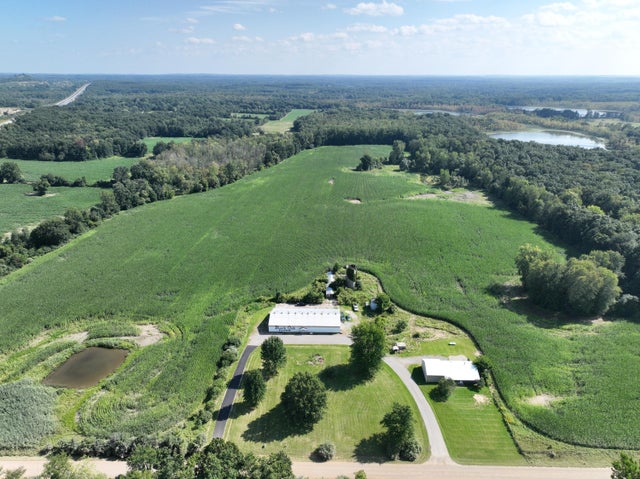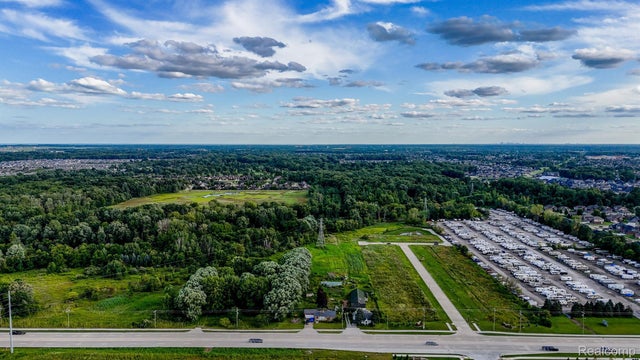In 2026, the Detroit Zoo will take a giant leap forward in how visitors experience wildlife with the opening of Discovery Trails. This 7-acre immersive environment promises not only to bring new species and updated habitats to the zoo but also to deepen the connection between humans and the natural world. By blending education, conservation, and hands-on animal encounters, Discovery Trails is set to redefine what it means to visit the zoo.
 detroitzoo, instagram
detroitzoo, instagram
The Vision Behind Discovery Trails
The concept for Discovery Trails is the culmination of years of careful planning and research by the Detroit Zoological Society. For more than a century, the zoo has been committed to creating spaces where people can connect with animals in meaningful ways. With Discovery Trails, this mission reaches new heights. The project was designed with a singular purpose: to foster curiosity and empathy for the natural world while creating an engaging, educational experience that caters to all ages.
One of the primary driving forces behind the project is the desire to immerse visitors in a way that extends beyond traditional zoo exhibits. Discovery Trails will bring guests closer to the animals and their habitats than ever before, allowing for up-close encounters that spark a deeper understanding of wildlife. The Detroit Zoo’s Executive Director, Dr. Hayley Murphy, emphasized the zoo’s approach to selecting species for the new area. “We look at what animals will thrive in Detroit’s climate and what will resonate with our guests. Some of these species, while not endangered, serve as ambassadors for wildlife, helping people build connections to the broader natural world,” she explained.
The immersive design of Discovery Trails isn’t just about proximity to animals; it’s about encouraging guests to actively engage with their surroundings. Through a combination of innovative architectural design, thoughtful educational spaces, and sustainable practices, Discovery Trails is a place where both animals and humans can thrive in harmony.
New Animal Habitats and Species
One of the most anticipated aspects of Discovery Trails is the introduction of new species that have never been featured at the Detroit Zoo before. Visitors will have the opportunity to observe alpacas, bush dogs, and burrowing owls in their newly constructed habitats, each carefully designed to mimic the animals’ natural environments. These habitats will not only provide the animals with the space and conditions they need to thrive but will also allow zoo-goers to see them in settings that reflect their real-world ecosystems.
Among the more intriguing additions is the bamboo shark, a species that will be featured alongside stingrays in an interactive tank where visitors can touch and even feed the marine creatures. This unique feature, known as Stingray Cove, will be a highlight of Discovery Trails, offering a rare hands-on experience with these gentle animals.
Returning species, such as giant anteaters, miniature donkeys, and prairie dogs, will also be housed in newly upgraded habitats that focus on providing enriched environments for the animals while offering enhanced viewing opportunities for guests. These updated spaces are designed to create a more natural, expansive feel, allowing visitors to observe the animals' behaviors in environments that closely replicate their natural habitats.
Murphy noted the importance of creating an environment that not only meets the animals’ needs but also engages visitors. "We want guests to leave with a greater appreciation for the species they encounter and a better understanding of the ecosystems these animals represent,” she said.
Immersive Experiences and Up-Close Encounters
The heart of Discovery Trails is its focus on creating personal, interactive experiences that allow visitors to engage directly with the animals. In addition to Stingray Cove, the Discovery Trails barnyard will offer the chance for guests to brush goats and feed chickens, a feature designed to build connections with animals that, while common, are not always accessible to urban populations.
Murphy highlighted the importance of these interactions, saying, “While goats and chickens aren’t necessarily exotic or endangered, they provide a bridge between the everyday and the extraordinary. By interacting with these animals, people begin to develop empathy, which can lead to a greater interest in conservation and wildlife preservation.”
In a zoo-first initiative, Discovery Trails will also offer a Canopy Trail experience that will take visitors 14 feet above the ground. This elevated walkway will provide a unique perspective of the surrounding habitats, giving guests the chance to observe animals from an entirely new angle. The Canopy Trail is more than just a novel attraction; it is a thoughtfully designed experience aimed at offering a broader view of the zoo’s ecosystems, encouraging visitors to see the interconnectedness of life from a different vantage point.
.png) detroitzoo, instagram
detroitzoo, instagram
Educational Features and Family-Friendly Spaces
For the youngest visitors, Discovery Trails will be a place of exploration and learning. The Little Sprouts area is specifically designed for children to engage with nature in a playful, tactile environment. From playing among oversized natural elements to exploring sensory trails, children will be encouraged to use all their senses to discover the world around them. This area aims to spark curiosity and foster a love for the natural world in the zoo’s youngest guests.
The farmer’s market and garden grove provide additional educational spaces, where children and families can learn about sustainability, food production, and the environment in an interactive and imaginative setting. These areas are designed not just for fun but to embed important lessons about the relationship between humans and nature.
Discovery Trails will also feature an outdoor classroom that will host educational programs tailored to school groups and young visitors. The Detroit Zoo anticipates that Discovery Trails will bring in an additional 13,000 children per year through school field trips. This educational focus aligns with the zoo’s broader mission of using wildlife and natural environments to teach important lessons about conservation and ecology.
Sustainability and Accessibility: A Space for All
Sustainability and inclusivity are at the core of Discovery Trails’ design. The entire space has been planned with eco-friendly principles in mind, using sustainable materials and practices to minimize the project’s environmental footprint. This commitment to sustainability is not just a passive effort; Discovery Trails will actively teach visitors about conservation efforts and sustainable living through various exhibits and interactive displays.
Accessibility is another key focus. The Canopy Trail, as well as all paths throughout Discovery Trails, will be wheelchair accessible, ensuring that every guest can enjoy the full experience. In addition, the zoo has planned sensory-friendly spaces for guests who may need a quiet, calming environment during their visit. These areas will offer respite from the excitement of the main attractions, allowing everyone to participate in a way that suits their needs.
Community and Economic Impact
The $20 million project is not only an investment in the zoo’s future but also in the surrounding community. Discovery Trails is expected to increase zoo membership by 11% and visitation by 12%, drawing more families and school groups from across the region. This boost in attendance is projected to increase the zoo’s overall economic impact to $185 million annually, reinforcing its role as a significant economic driver for the city of Detroit.
Much of the funding for Discovery Trails has come from grants and private donations, reflecting the strong support the project has garnered from the community. This financial backing is a testament to the belief that Discovery Trails will not only enhance the zoo experience but also provide lasting educational and economic benefits for the region.
A Forward-Looking Conclusion
As the Detroit Zoo prepares to open Discovery Trails in 2026, the project stands as a beacon for the future of wildlife conservation and education. It represents the culmination of decades of planning and a commitment to creating a space where people of all ages and abilities can connect with the natural world. From new species to innovative educational programs and sustainable practices, Discovery Trails will offer an experience that is both groundbreaking and deeply rooted in the zoo’s long-standing mission.
By immersing visitors in these rich, diverse environments, the Detroit Zoo aims to inspire a new generation of conservationists, helping to ensure that both people and animals can continue to thrive for years to come.
DON'T KEEP US A SECRET - SHARE WITH A FRIEND OR TO SOCIAL MEDIA!

.png)



















































Leave A Comment